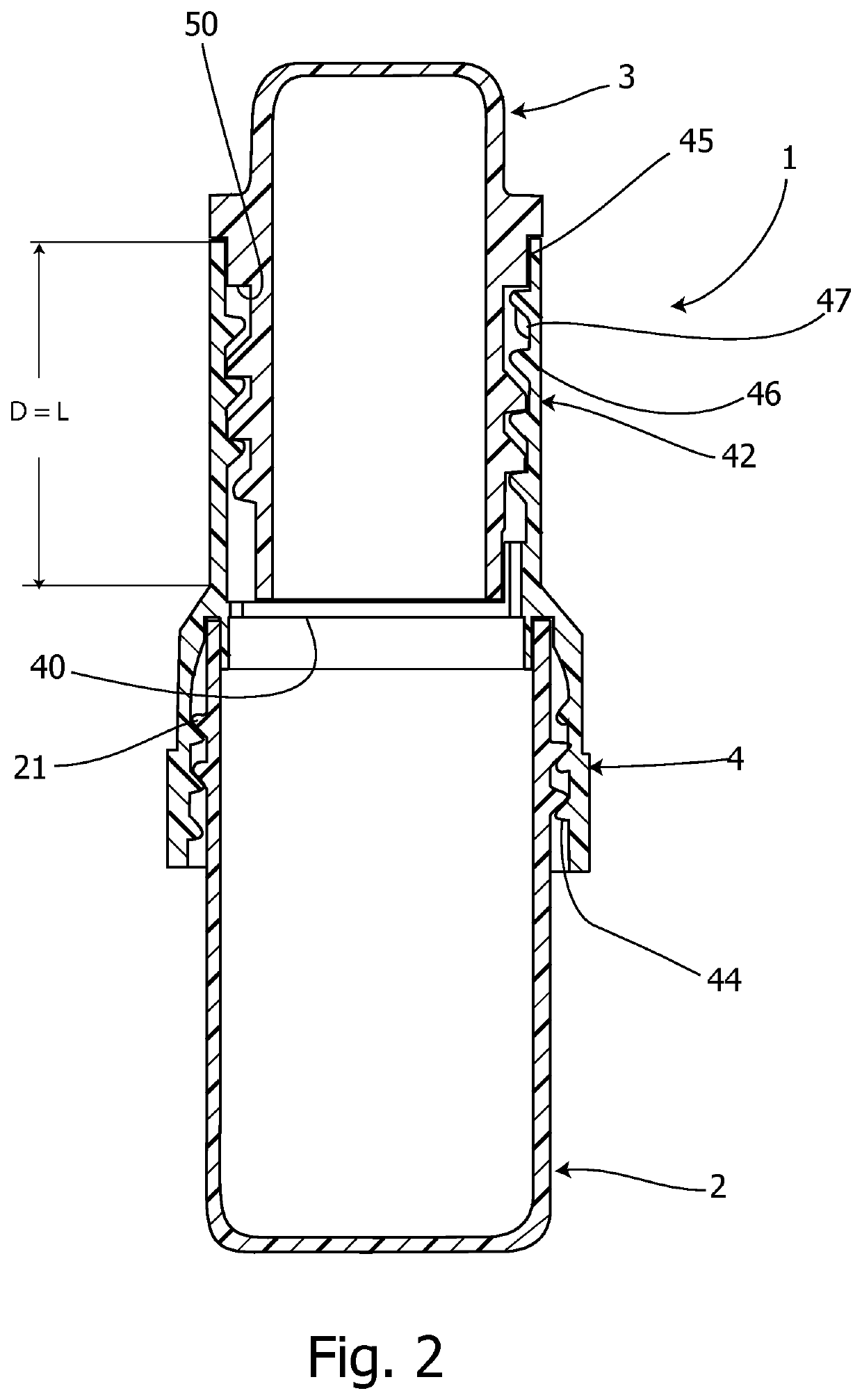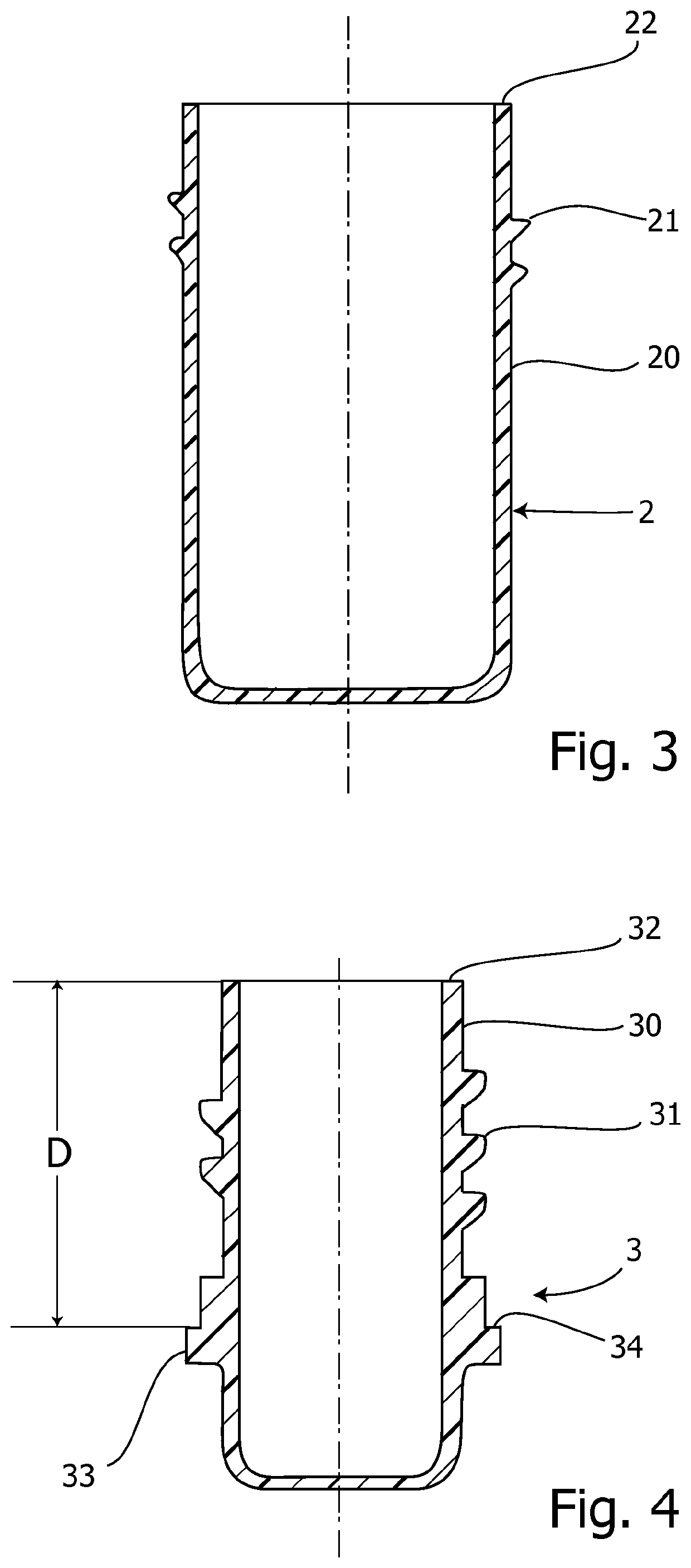Container and method for preserving a tissue sample
a tissue sample and container technology, applied in the field of container for in vitro diagnostics, can solve the problems of preventing the passage of formaldehyde and containing risks for the health of operators, and achieve the effect of reducing the number of component parts and small chance of error
- Summary
- Abstract
- Description
- Claims
- Application Information
AI Technical Summary
Benefits of technology
Problems solved by technology
Method used
Image
Examples
Embodiment Construction
[0032]First of all, reference is made to FIGS. 1 and 2 which are an overall perspective view and a central longitudinal sectional view in a closed position, respectively, of a first embodiment of the container 1 for in vitro diagnostic according to the present invention.
[0033]The container 1 consists of a lower receptacle 2, an upper receptacle 3 and a connecting sleeve 4, the latter as a threaded coupling means for joining the lower receptacle 2 to the upper receptacle 3. The terms “lower” and “upper” refer to the upright position of the container in its handling, because when the container is completely closed it can assume any position without any prejudice.
[0034]The lower receptacle 2 is designed to contain, before using the container, a non-toxic liquid, for example a buffer solution of the kind used to receive a tissue sample. As shown in the longitudinal sectional view in FIG. 3, the lower receptacle 2 has a side wall 20 provided with an external thread 21 and ending with a c...
PUM
| Property | Measurement | Unit |
|---|---|---|
| diameter | aaaaa | aaaaa |
| length | aaaaa | aaaaa |
| time | aaaaa | aaaaa |
Abstract
Description
Claims
Application Information
 Login to View More
Login to View More - R&D
- Intellectual Property
- Life Sciences
- Materials
- Tech Scout
- Unparalleled Data Quality
- Higher Quality Content
- 60% Fewer Hallucinations
Browse by: Latest US Patents, China's latest patents, Technical Efficacy Thesaurus, Application Domain, Technology Topic, Popular Technical Reports.
© 2025 PatSnap. All rights reserved.Legal|Privacy policy|Modern Slavery Act Transparency Statement|Sitemap|About US| Contact US: help@patsnap.com



